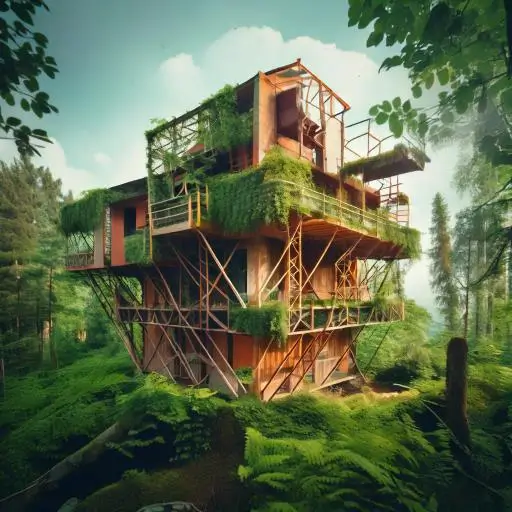
"What was once an environmental movement to conserve energy is now becoming the mandated building code, bringing risks and liabilities for architects, builders, and contractors."
Despite the economic recession, the number of green building projects across the U.S. continues to grow. Yet, as they assess the widening opportunities for building green, building owners, contractors, architects, engineers, and home builders express concern about a variety of risks that may be associated with these projects, including potential financial exposures, uncertainty about evolving regulatory standards and legal issues, validating the qualifications of consultants and subcontractors, and assessing the long-term performance of green building materials, among other potential issues. What was once an environmental movement to conserve energy and build in harmony with the fragile ecology of the planet is quickly becoming the mandated building code in many states as well as in other countries. California now leads the list of states that have implemented new "state-wide" green building codes to specify how energy, water, light and materials are to be used to reduce the carbon footprints and the conservation of natural resources of new projects. The new CALGreen code went into effect on January 1st, 2011 and is now being enforced in some manner in all counties of the state. Unfortunately, the requirements of the Green Code are being individually enforced by each building authority with some degree of ambiguity. Design professionals and contractors are scrambling to get familiar with the new provisions and to understand just what constitutes compliance. Additionally, the US Green Building Council (USGBC) is playing an important role in qualifying the performance of buildings under the LEED Certification process. The arena of Green Building now has several measures that endeavor to evaluate the efficiency and performance of buildings. Some are enforceable codes, others are elective standards that when incorporated into the drawings, specs and contract become massive liabilities to architects, engineers, builders, specialty contractors, manufacturers and suppliers. The lawsuits are just beginning to be filed as a result of new projects failing to meet the LEED Certification levels promised to the client.

"Success in green building projects hinges on understanding risks and addressing them effectively, with contract language being key to limiting liability."
"While it's exciting to see the green building movement gain momentum, success for the design and construction firms involved in these projects as well as for the building owners ultimately may depend on having a clear understanding of their potential risks and the most effective ways to address them," said Michael Feigin, a managing director of Marsh and the firm's Global Construction Practice Leader. As Mr. Feigin summarized, the key factor of exposure is having a "clear understanding"; not only of the risks but as to what is being delivered. The contract language is the key to limiting the liability. Industry leaders have acknowledged the top five risks as: 1) Performance Risks which centers on the ability of the installed equipment and devices to deliver the energy savings and building comfort as promised. 2)Consultant and Subcontractor Risks including problems associated with lack of training and expertise and the difficulty of replacing an unqualified contractor with one that has the appropriate credentials and qualifications to do the work. 3)Regulatory Exposure that designers and builders face from uncertainty with code enforcement. 4)The ongoing review of LEED Certification is often the basis for evaluating the total performance of the building(s) and the qualification for tax incentives from the federal, state and local governments. Failure to reach the planned LEED certification level could result in the denial of the government agency to make tax incentives available. 5)Promised Return on Investment (ROI) based on energy savings and lower utility bills. "Despite the industry's concerns about these exposures, some of them can be addressed to varying degrees through the availability of commercial insurance and surety solutions, or in some instances mitigated through contractual agreements," said Catha Pavloff, LEED Accredited Professional, a senior vice president of Marsh and leader of the firm's Green Building Team.

"Clear understanding and precise contract language are key to mitigating risks in green building projects, from performance and regulatory exposure to promised ROI."
Mr. Feigin summarized, the key factor of exposure is having a "clear understanding"; not only of the risks but as to what is being delivered. The contract language is the key to limiting the liability. Industry leaders have acknowledged the top five risks as: 1) Performance Risks which centers on the ability of the installed equipment and devices to deliver the energy savings and building comfort as promised. 2)Consultant and Subcontractor Risks including problems associated with lack of training and expertise and the difficulty of replacing an unqualified contractor with one that has the appropriate credentials and qualifications to do the work. 3)Regulatory Exposure that designers and builders face from uncertainty with code enforcement. 4)The ongoing review of LEED Certification is often the basis for evaluating the total performance of the building(s) and the qualification for tax incentives from the federal, state and local governments. Failure to reach the planned LEED certification level could result in the denial of the government agency to make tax incentives available. 5)Promised Return on Investment (ROI) based on energy savings and lower utility bills.
"Nonetheless, the commercial insurance market still is evolving with respect to green building exposures. As underwriters become more adept at assessing and quantifying risks associated with green building, we may see a growth of green-building-specific insurance coverages," she added.